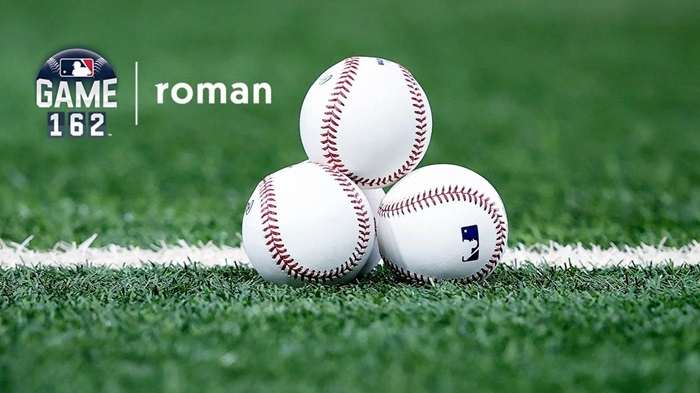Baseball is often called America’s pastime, and Major League Baseball (MLB) stands at the center of this sporting tradition. The MLB season is an epic journey filled with anticipation, excitement, and countless games. But just how many games are played in an MLB season? The answer is simple 162 games per team in the regular season but this number only scratches the surface of the complexity and history behind it. In this article, we will dive deep into the structure of the MLB season, the historical reasons behind the 162-game format, and the significance of every game.
A Brief History of the MLB Season

To understand why the MLB season has 162 games, it’s important to look at the history of the league and how the schedule evolved over time.
Early Years: The Formation of Major League Baseball
Major League Baseball, as we know it today, has its roots in the late 19th century. Back then, the game was much different, and so was the season length. The National League, founded in 1876, and the American League, established in 1901, played a significant role in shaping modern baseball. At the start of the 20th century, teams were playing about 140 to 154 games per season.
The reason for this variance in early seasons was mainly due to the smaller number of teams and the logistics of travel. Teams had to move around the country on trains, which made scheduling games more challenging.
The Expansion Era and the 162-Game Format
The current 162-game format was established in 1961 for the American League and in 1962 for the National League. Before this change, MLB teams played 154 games. The shift to 162 games occurred when each league expanded from 8 to 10 teams, necessitating a more extended schedule to accommodate the additional teams and create a balanced competition. The idea was to allow each team to face others an equal number of times, ensuring fairness across the league.
The new format was not only more exciting for fans but also provided players with more opportunities to showcase their skills over a longer season, making records more meaningful and statistical comparisons more insightful.
Breakdown of the MLB Season
So, now that we know the MLB regular season consists of 162 games per team, how exactly is this marathon season structured? Here’s a closer look at how MLB organizes its games and what makes up a full season.
Regular Season
Each MLB team plays 162 games during the regular season, which typically starts in early April and ends in late September or early October. The season is divided into series, with teams generally playing three or four games against each opponent before moving on to face another team.
Divisional Games
A significant portion of the MLB schedule is dedicated to divisional games. Each team is part of a division—either the American League or the National League—and competes against other teams within that division. Typically, a team will play 76 games against divisional opponents. This structure makes divisional races exciting, as teams have more opportunities to directly impact their standings against the teams they’re competing with for playoff spots.
Interleague Play
In 1997, MLB introduced interleague play, which allowed teams from the American League to face teams from the National League during the regular season. Before this, the only time teams from the two leagues would meet was in the World Series. Interleague games add an extra layer of excitement and give fans the chance to see matchups that wouldn’t otherwise occur. Each team plays about 20 interleague games per season.
Games Against Non-Divisional Opponents
In addition to divisional and interleague games, MLB teams play approximately 66 games against non-divisional opponents within their own league. This ensures that teams have a chance to face a wide variety of opponents over the course of the season, and it balances the overall competition.
Spring Training
Although not part of the regular season, Spring Training is an essential part of the MLB calendar. Before the official start of the 162-game season, teams prepare by playing a series of exhibition games in March. Spring Training allows players to get back into game shape, managers to make decisions about final rosters, and fans to get a sneak peek of what’s to come.
Spring Training also serves as a time for fans and teams to bond in more relaxed environments like Arizona and Florida, where most of these games are held. Although the games don’t count toward the standings, they’re a key part of gearing up for the intense regular season.
Postseason
While the regular season is a grueling marathon, the MLB postseason is a high-stakes sprint. Only 12 teams make it to the playoffs—six from each league, including the winners of each division and three Wild Card teams. The postseason consists of several rounds:
- Wild Card Series: The three lowest-seeded playoff teams in each league face off in a best-of-three series.
- Division Series: Winners of the Wild Card Series move on to face the top-seeded teams in a best-of-five series.
- Championship Series: The two winners from each league’s Division Series then battle in a best-of-seven series for the league championship.
- World Series: The champions of the American League and National League meet in a best-of-seven series to determine the ultimate MLB champion.
Although the regular season has 162 games, the postseason is much shorter, making every single playoff game incredibly important. Teams must perform their best under immense pressure, as even one loss can mean the difference between advancing or being eliminated.
The Significance of 162 Games

You might wonder: Why 162 games? Why not fewer or more games? The 162-game format serves several important purposes that make baseball unique among major sports.
Testing Teams Over Time
One of the most significant aspects of baseball is its unpredictability. In a sport where anything can happen on any given day, a longer season allows for the best teams to rise to the top over time. Unlike football, where one bad game can ruin a team’s season, baseball teams have the chance to recover from slumps and prove their consistency over 162 games.
This lengthy schedule tests teams’ depth, strategy, and ability to withstand injuries. A successful MLB season requires managing not only talent but also stamina and long-term planning.
Fan Engagement
A 162-game season offers more opportunities for fans to engage with their favorite teams. Baseball, being a sport filled with tradition and history, thrives on the daily excitement of games. For six months out of the year, baseball fans have something to look forward to almost every day. Whether it’s tuning into a game on TV, listening to it on the radio, or attending it in person, the sheer volume of games allows fans to immerse themselves in the sport.
Records and Milestones
The 162-game season also plays a crucial role in baseball’s love for records and statistics. With so many games, players have the chance to achieve milestones that would be impossible in shorter seasons. Whether it’s hitting 50 home runs in a season, reaching 3,000 career hits, or recording 300 strikeouts, the extended schedule makes baseball a numbers-driven sport.
Financial Aspect
From a business standpoint, more games mean more revenue. More games mean more ticket sales, more broadcasting opportunities, and more merchandising possibilities. Teams benefit from the extended schedule, and so do stadium vendors, local businesses, and media companies that cover the games. This economic impact helps sustain the sport and its stakeholders.
How Does MLB Compare to Other Sports?
When we compare the length of the MLB season to other major sports, it’s clear that baseball operates on a different scale. The NBA and NHL, for example, both have 82-game regular seasons, while the NFL only has 17 regular-season games. The sheer length of the MLB season is one of its defining features, making it unique among professional sports.
Baseball’s Everyday Nature
One reason for the longer season in baseball is that it’s a less physically demanding sport than football or basketball. Players can compete almost every day without risking the kind of injuries seen in more high-contact sports. As a result, baseball fans are treated to games almost daily from April to October.
Balancing Competition
In sports like the NFL, where fewer games are played, every single game is crucial. In baseball, while every game matters, teams have room for error. A team might lose 60 games in a season and still finish with one of the best records in the league. This longer season balances out the randomness of individual games, making sure that the most well-rounded teams make it to the playoffs.
The Future of the MLB Schedule
With advances in technology, travel, and player fitness, the 162-game schedule has endured, but will it always stay this way?
Potential for Change
There have been discussions about shortening the season to reduce player fatigue and injuries. Some advocates suggest that reducing the number of games might improve the quality of play, as players would be more rested, and each game would carry more weight. However, a shorter season would also mean less revenue, fewer opportunities for players to break records, and a different feel to the sport.
Expansion Teams
If MLB were to add more teams in the future, the league might reconsider the number of games to ensure a balanced schedule. However, no changes have been officially proposed, and the 162-game format remains a hallmark of MLB.
Related Post:
2 Player Games Unblocked: The Ultimate Guide to Fun and Friendly Competition
OVO Cool Math Games: A Complete Guide to Mastering the Game
Popular Google Doodle Games: A Fun and Nostalgic Journey
The MLB season, with its 162 games, is a testament to the endurance and strategy required in professional baseball. This lengthy schedule allows the best teams to emerge, provides fans with countless moments of excitement, and helps preserve the rich tradition of the sport. While there may be discussions about the future of the season, the 162-game format remains one of the key elements that make Major League Baseball unique.


